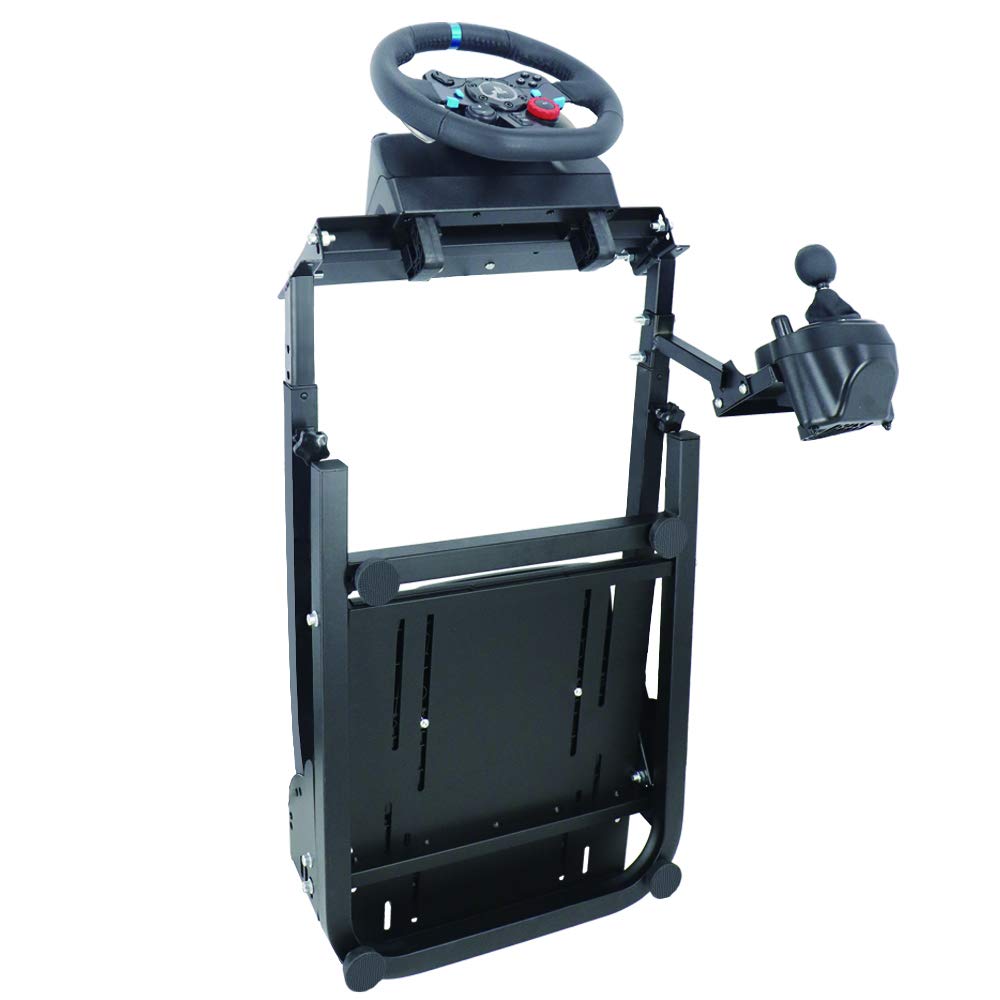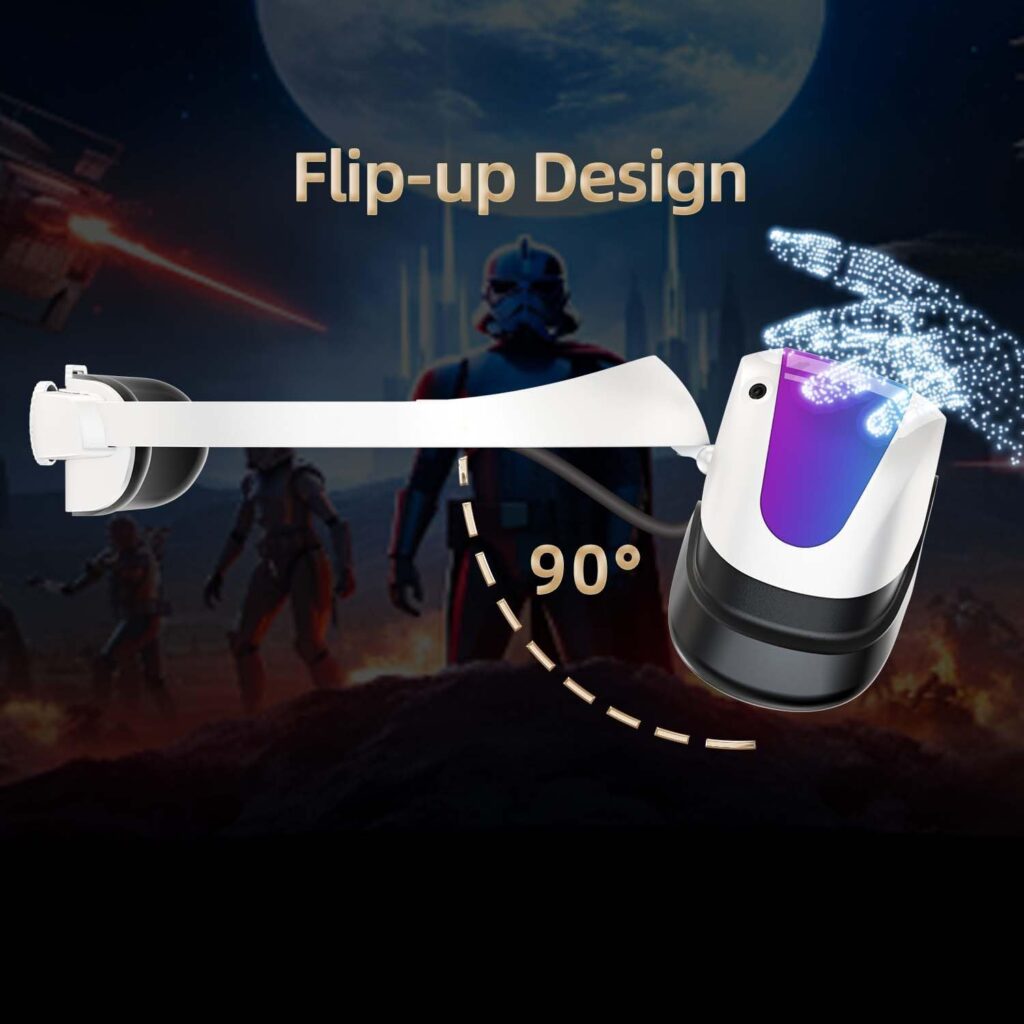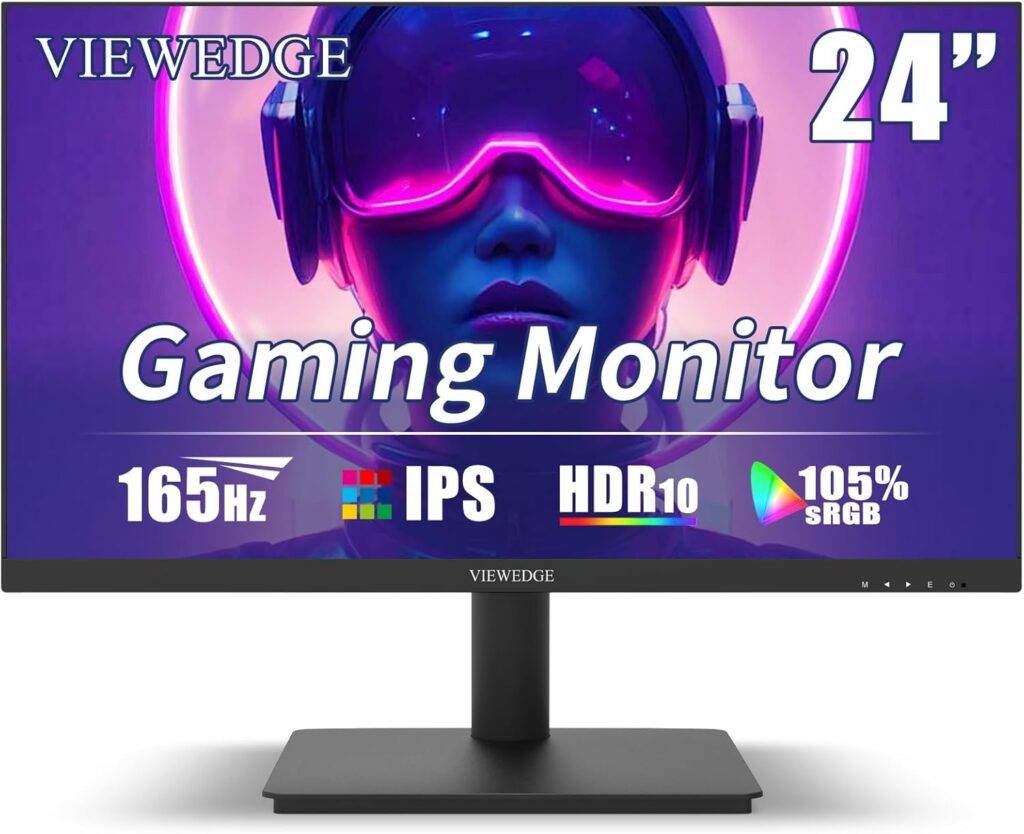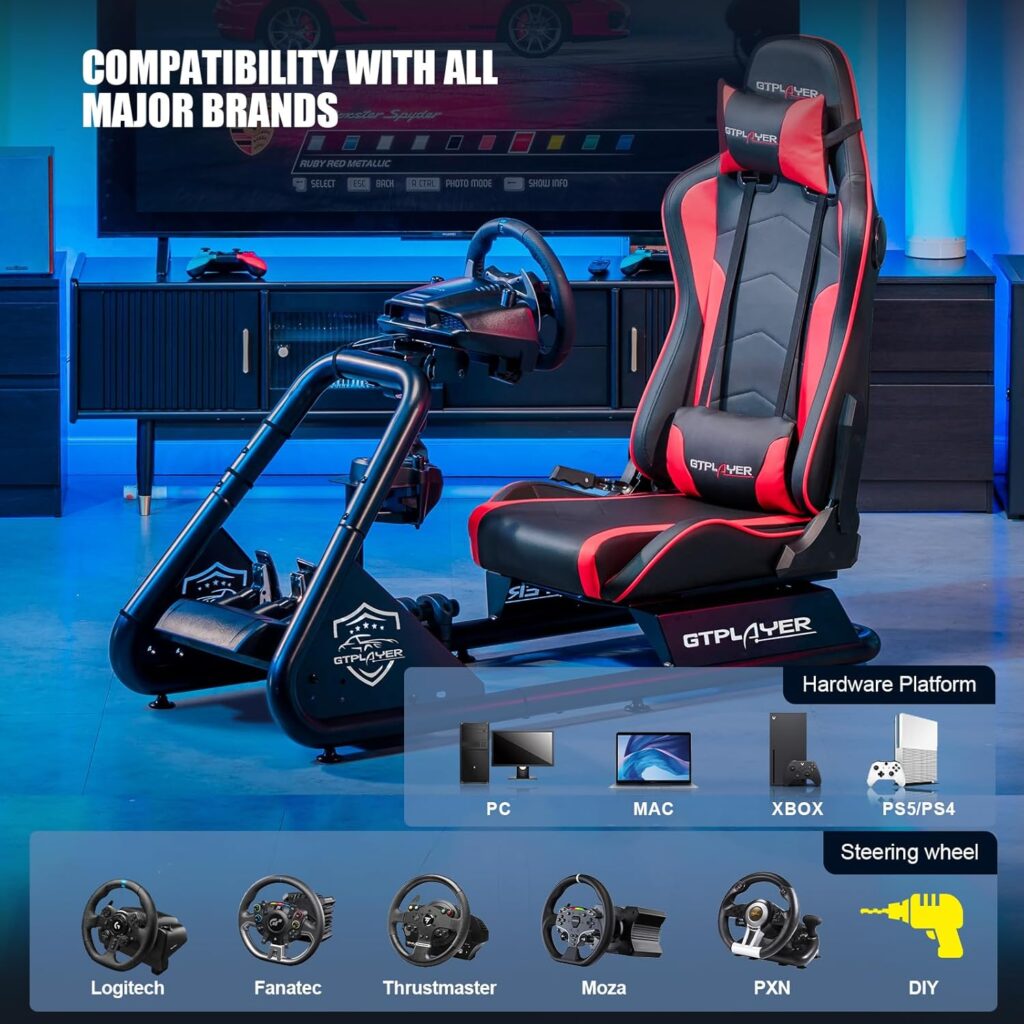As the saying goes, 'practice makes perfect.' But can virtual practice truly bridge the gap between sim racing and real racing? The world of sim racing has made significant strides in providing an immersive and realistic experience, but can it ever replicate the adrenaline rush and physical demands of being on a real racetrack?
In this discussion, we will explore the advancements in sim racing technology, the emotional aspects of the virtual experience, and the perspective of professionals in the racing community. Is sim racing just a training tool, or does it hold the potential to revolutionize the world of real racing?
Key Takeaways
- Sim racing technology has evolved to create an immersive and authentic racing experience, with advancements in realistic tracks, cars, tire models, and simulated movement.
- Sim racing provides an emotional experience similar to real racing, allowing individuals to experience the joy of victory, the bitterness of defeat, and the adrenaline of competition.
- Sim racing fosters a competitive camaraderie among virtual racers, providing a platform for interaction, friendly competition, and the sharing of experiences and strategies.
- Sim racing serves as an invaluable training tool and learning experience, allowing racers to practice and improve their skills in a safe and controlled environment, and providing detailed performance data for feedback and analysis.
Evolution of Sim Racing Technology
Over the years, sim racing technology has undergone a remarkable evolution, pushing the boundaries of realism and car physics to create an immersive and authentic racing experience. Developers and manufacturers have joined forces with professional racers to achieve the highest level of realism and accuracy in sim racing. This collaboration has led to advancements in various areas of technology, including the development of realistic tracks, cars, tire models, and simulated movement. Sim racing technology has come a long way from its humble beginnings, offering racers an unparalleled level of immersion and engagement.
One of the key aspects of sim racing technology is its ability to provide racers with an emotional experience. While it may not be the same as real racing, sim racing allows individuals to experience the joy of victory, the bitterness of defeat, and the adrenaline of competition. This emotional aspect adds a unique dimension to the racing experience, making sim racing a compelling alternative to real racing for many enthusiasts.
Sim racing also serves as an invaluable training tool and learning experience for racers. It allows drivers to practice and improve their skills, stay in shape, and learn about tracks and racing nuances. The realistic nature of sim racing technology enables racers to hone their abilities in a safe and controlled environment, preparing them for real-world racing scenarios.
Looking towards the future, sim racing technology is expected to continue evolving. With advancements in technology, including virtual reality and augmented reality, simulators are becoming more realistic, bridging the gap between the virtual and real worlds of racing. Exciting events are being held in the virtual world, attracting professional racers and enthusiasts alike.
Realism in Sim Racing Physics
Sim racing physics strive to replicate the intricacies of real-world car physics and handling, delivering an immersive and authentic driving experience. Developers collaborate with professional racers and use advanced technologies to replicate realistic tire behavior and vehicle dynamics.
Here are three ways sim racing physics aim to achieve realism:
- Accurate Tire Behavior: In real racing, tire grip and wear play a crucial role in a car's performance. Sim racing physics strive to recreate this by simulating the interaction between the tires and the road surface. The developers take into account factors like tire pressure, temperature, and wear, which directly affect a vehicle's handling and performance.
- Realistic Vehicle Dynamics: Sim racing physics aim to accurately replicate the way a car reacts to different driving conditions. This includes factors like weight transfer during acceleration, braking, and cornering, as well as suspension movement and aerodynamics. By accurately simulating these dynamics, sim racing allows players to experience the same nuances as real-world racing.
- Dynamic Weather and Conditions: Real racing is often influenced by changing weather conditions, such as rain or changing track temperatures. Sim racing physics aim to replicate these conditions, adding an additional layer of realism to the simulation. This includes simulating the impact of weather on tire grip, vehicle stability, and overall handling.
Emotional Aspects in Sim Racing
Get ready to experience a virtual adrenaline rush like never before.
In sim racing, the emotional aspect is heightened by the immersive experience it provides. You'll feel the thrill of competition as you navigate the virtual tracks, pushing yourself to the limit.
And don't forget about the competitive virtual camaraderie that sim racing fosters, as you connect with fellow racers who share your passion and dedication.
Virtual Adrenaline Rush
Experiencing a virtual adrenaline rush like never before, sim racing immerses you in the emotional rollercoaster of victory and defeat. As you navigate the virtual race tracks, you'll find yourself on the edge of your seat, heart pounding, and palms sweaty.
Here's what you can expect from the virtual adrenaline rush in sim racing:
- Intense Competition: The thrill of competing against other racers, even in a virtual environment, can ignite a fierce sense of competitiveness. You'll feel the rush of adrenaline as you battle for position, strategize your moves, and push yourself to the limit.
- Immersive Realism: With advances in technology, sim racing has become incredibly realistic. The detailed graphics, realistic physics, and accurate audio create an immersive experience that amplifies the adrenaline rush. You'll feel like you're really behind the wheel, racing against the best.
- Emotional Highs and Lows: Just like in real racing, sim racing can evoke a range of emotions. From the euphoria of crossing the finish line first to the frustration of a crash or a missed opportunity, the virtual adrenaline rush in sim racing can transport you to a world of intense emotions.
Sim racing may not offer the physical sensations of real racing, but it certainly delivers an exhilarating virtual adrenaline rush that's hard to replicate in any other form of entertainment.
Immersive Emotional Experience
Immersed in the world of sim racing, you'll discover a captivating and emotionally charged experience unlike any other.
Sim racing offers an immersive emotional experience that allows you to feel the exhilaration of victory and the disappointment of defeat in a virtual setting. It provides a unique opportunity to bridge the gap between the virtual and real world of racing emotionally.
While sim racing can evoke similar feelings of adrenaline and competition as real racing, professional racers have stated that the emotional aspect differs. Felipe Massa, for example, emphasized that nothing compares to the feeling of being behind the wheel of a real car.
Nonetheless, sim racing still provides an immersive emotional experience that appeals to racing enthusiasts seeking to satisfy their passion for the sport.
Competitive Virtual Camaraderie
In the world of sim racing, virtual racers experience a competitive camaraderie that fosters emotional connections and shared experiences. Despite being a virtual setting, sim racing provides an opportunity for racers to connect with like-minded individuals who share a passion for virtual racing and competition.
Here are three reasons why sim racing offers a space for competitive virtual camaraderie:
- Community: Sim racing serves as a platform for racers to join a community of fellow virtual racers. Through online forums, multiplayer races, and social media groups, they can interact, share tips, and engage in friendly competition. This sense of community fosters emotional connections and a feeling of belonging.
- Shared Experiences: Sim racing allows racers to experience victories and defeats together. They can share their triumphs and frustrations, exchanging stories and strategies. This shared experience creates a bond among virtual racers, strengthening the sense of camaraderie.
- Competition: Sim racing is highly competitive, with racers constantly striving to improve their skills and beat their opponents. This competitive environment brings out a range of emotions, from the thrill of victory to the disappointment of defeat. The shared pursuit of excellence and the drive to outperform each other cultivates a strong sense of camaraderie among virtual racers.
Professional Insights on Sim Racing Vs Real Racing
Professional racers offer valuable insights and comparisons between sim racing and real racing, shedding light on the strengths and limitations of each.
Sim racing aims for perfection in terms of realism and car physics, with developers and hardware manufacturers closely working with professional racers to create an immersive experience. It provides a unique way to feel the joy of victory and the bitterness of defeat, offering an opportunity to experience the adrenaline and sense of competition that real racing provides.
Sim racing also allows racers to practice and improve their skills without leaving home, becoming an essential part of training for real racing. It's becoming an increasingly integral part of racing culture, entertaining millions of fans and offering a platform for learning and developing racing skills.
However, professional racers also acknowledge that sim racing has its limitations. While it can bridge the gap between virtual and real-world racing, sim racing can't completely replicate the physical demands and sensations of real racing. The feeling of G-forces, the vibrations of the car, and the interaction with other drivers on the track are elements that can only be fully experienced in real racing.
Nonetheless, sim racing provides a valuable tool for training, strategy testing, and honing racing skills, making it a crucial part of a racer's journey.
Simulated Tracks Vs Real Tracks
When comparing simulated tracks to real tracks, one can't overlook the advancements in technology that have allowed for a more realistic racing experience. Here are three key factors that contribute to the growing realism of simulated tracks:
- Laser scanning technology: Simulated tracks have significantly improved in accuracy and detail thanks to laser scanning technology. By capturing precise measurements of real tracks, simulators can recreate every bump, curve, and nuance of the track surface. This ensures a more authentic driving experience for sim racers.
- Horizon locking: Horizon locking is a feature that simulators use to simulate track elevation and camber changes. By adjusting the virtual horizon based on the track's profile, sim racers can feel the subtle shifts in the track's surface, enhancing the immersion and realism of the simulation.
- Virtual reality support: Virtual reality (VR) adds another layer of realism to simulated tracks. With VR headsets, sim racers can fully immerse themselves in the virtual environment, feeling the speed, depth perception, and intensity of a real track. This technology brings sim racing closer to the real racing experience, allowing for a more engaging and lifelike experience.
While simulated tracks have come a long way in replicating real tracks, it's important to note that they can never fully replicate the feeling of driving a real car. The physical sensations, such as the g-forces and vibrations, are unique to real racing and can't be fully replicated in a simulator.
However, the advancements in technology have bridged the gap between simulated tracks and real tracks, providing an increasingly realistic racing experience for enthusiasts.
Cars and Tire Models in Sim Racing
Tire models in sim racing have undergone significant advancements, allowing for a more realistic and immersive driving experience. The tire models used in different simulators can vary greatly, and developers are constantly working to improve them. Even basic tire models from several years ago offer valuable training opportunities, enabling drivers to understand the intricacies of tire behavior and how it affects the overall performance of the car.
In sim racing, tires play a crucial role in providing feedback to the driver and determining the car's handling characteristics. The tire models take into account factors such as tire pressure, temperature, wear, and grip levels. This allows for a more accurate representation of how the car will behave in different driving conditions.
Simulators provide the freedom to experiment with tire performance without any real-world consequences. Drivers can test different tire compounds, adjust tire pressures, and explore the limits of grip without worrying about damaging the car or themselves. This allows for a deeper understanding of tire behavior and helps drivers develop their skills in a safe and controlled environment.
However, it's important to note that while tire models in sim racing have come a long way, they still can't fully replicate the feeling of driving a real car. The nuances of tire behavior and the physical sensations experienced in real racing are difficult to recreate virtually.
Nonetheless, sim racing continues to bridge the gap between the virtual and real racing world, providing an invaluable tool for training, practice, and enjoyment.
Simulating Movement in Sim Racing
To truly immerse yourself in the world of sim racing, the intricate physics and dynamics of real-world car movement must be meticulously simulated in a virtual environment. Simulating movement in sim racing involves replicating the complex interactions between the car and the road, translating every steering, throttle, and braking input into realistic handling and responsiveness.
Here are three key aspects of simulating movement in sim racing:
- Precise Translation: Simulating movement requires precise translation of your inputs to accurately replicate the behavior of a real car. This includes the way the suspension moves, how weight transfers during acceleration, braking, and cornering, and the grip of the tires on the road. The goal is to provide an authentic driving experience that closely mirrors real-world dynamics.
- Force Feedback: Advanced force feedback steering wheels and pedals play a crucial role in simulating movement. They provide tactile feedback to the driver, conveying the subtle nuances of car movement such as vibrations, resistance, and even the feeling of losing grip. This enhances the sense of immersion and helps bridge the gap between the virtual and real-world driving experience.
- Constant Refinement: Simulating movement in sim racing is an ongoing process of refinement and development. As technology advances and our understanding of real-world car physics improves, developers continuously strive to bridge the gap and create more accurate simulations. This involves fine-tuning tire models, suspension behavior, and other factors to deliver a more realistic and satisfying driving experience.
Benefits of Sim Training for Real Racing
Sim training for real racing offers a multitude of benefits that can enhance your skills, knowledge, and overall performance on the track. By bridging the gap between virtual and real-world racing, simulators provide racers with a valuable platform for continuous improvement.
One of the key advantages of sim training is skill improvement. With the ability to practice and refine driving techniques from the comfort of your own home, sim racing allows you to hone your skills without the need for expensive track time.
Another benefit is track familiarization. Simulators give you the opportunity to learn about different tracks and their unique characteristics. By racing virtual laps on various circuits, you can gain valuable experience and familiarity with different racing lines, braking points, and cornering techniques. This knowledge can then be applied to real-world racing, giving you a competitive edge.
Sim training also offers cost-effective training. For those who may not have access to real-world racing resources, simulators provide an affordable way to stay in shape and experience the atmosphere of racing. With realistic graphics, physics, and audio, sim racing can recreate the excitement and intensity of real racing without breaking the bank.
Additionally, simulators provide a risk-free environment for experimentation. You can try out different driving techniques and scenarios without the consequences of real-world racing. This allows for risk-free learning and skill development, as you can analyze the outcomes and adjust your approach accordingly.
Lastly, sim racing offers invaluable feedback and analysis. By providing detailed performance data, simulators allow you to analyze your driving and identify areas for improvement. This feedback can then be used to enhance your on-track performance, making you a more effective and competitive racer.
Perceptions of Sim Racing in the Racing Community
As a racing enthusiast, you may be curious about how sim racing is perceived within the racing community. Well, let me tell you, sim racing has gained significant credibility over the years.
With the advancements in technology and the realism of simulators, more and more racing professionals are recognizing the value of sim racing as a training tool and a legitimate form of competition.
Sim racing has proven its worth by providing an immersive experience that replicates real racing conditions, allowing drivers to hone their skills and strategize in a virtual environment.
Sim Racing Credibility
Sim racing has gained substantial credibility within the racing community, with its acceptance as an esport and the growing involvement of real racing drivers. Here are three reasons why sim racing is bridging the gap and gaining recognition:
- Different Skill Set: Sim racing requires a slightly different skill set compared to real racing. Drivers in sim racing take on multiple roles, such as strategist, driver, and engineer. This showcases the complexity and depth of the sport, earning it credibility among racing enthusiasts.
- Real Racing Driver Participation: Many real racing drivers also participate in sim racing, either competitively or for fun. This highlights the growing acceptance and integration of sim racing in the racing community. The involvement of professional drivers brings legitimacy and adds to the excitement of the sport.
- Porsche's Involvement: Porsche's active involvement in sim racing has helped bridge the gap between real and sim racing. Their support and recognition have changed perspectives and brought different disciplines together. This collaboration hasn't only elevated the credibility of sim racing but also created opportunities for cross-disciplinary learning and growth.
Sim racing's credibility continues to grow, thanks to these factors that showcase its unique qualities and its ability to bridge the gap with real racing.
Realism in Simulators
Realism in simulators has revolutionized the perception of sim racing within the racing community, elevating it to new heights of authenticity and immersive gameplay. Sim racing provides an unparalleled level of realism, with developers striving for perfection in terms of car physics and overall accuracy. From tire pressure changes to the impact of weather conditions, every detail is meticulously simulated to recreate the racing experience.
While sim racing may differ in terms of the emotions it evokes compared to real racing, it offers a unique emotional experience nonetheless. Additionally, sim racing serves as a valuable training tool for racers, allowing them to practice and improve their skills from the comfort of their own homes. It has even become an essential part of professional racers' training regimes.
As technology continues to advance, sim racing will only become more realistic, with virtual races becoming an integral part of racing culture. The use of laser scanning technology has greatly improved the realism of simulated tracks, while simulators faithfully follow the laws of physics, allowing for the development of transferable skills to real racing.
The Future of Sim Racing and Its Impact on Real Racing
The ever-evolving landscape of sim racing holds immense potential for shaping the future of real racing, with its advanced technologies and immersive experiences. As sim racing continues to progress, it's poised to have a significant impact on the world of motorsports.
Here are three ways the future of sim racing will influence real racing:
- Advancing Realism: The future of sim racing promises to bring even greater realism to players through advanced physics and tire models. As technology continues to improve, simulators will provide more accurate representations of real-life racing conditions, allowing drivers to hone their skills in a virtual environment that closely mirrors the real world.
- Valuable Training Tool: Sim racing serves as a valuable training tool for racers, enabling them to practice and improve their skills without leaving the comfort of their homes. With the ability to simulate various tracks and conditions, drivers can gain valuable experience, refine their techniques, and make data-driven decisions that can be applied to real racing scenarios.
- Integration into Racing Culture: The integration of sim racing into racing culture is expected to continue, with virtual races entertaining millions of fans and offering new technologies for more realistic simulators. Sim racing isn't just a game but an innovative way to unite virtual and real racing, influencing modern racing culture and paving the way for future innovations.
The future of sim racing holds great promise for the world of motorsports, with its potential to bring realism, serve as a training tool, and integrate into racing culture. As technology continues to advance, sim racing will bridge the gap between virtual and real-world racing, shaping the future of the sport.
Frequently Asked Questions
How Close Is Sim Racing to Real Driving?
Sim racing is surprisingly close to real driving. The skills you develop in sim racing can be transferred to real racing, giving you an advantage on the track.
The immersive experiences provided by simulators allow you to feel the adrenaline and emotions of a real race. Sim racing offers a lifelike experience that can help you practice and improve your skills.
While it may not completely replace the genuine emotions of real racing, sim racing definitely bridges the gap between virtual and real driving.
Does Sim Racing Help With Real Life Racing?
Sim racing is like a turbo boost for your real-life racing skills. The benefits are undeniable. It hones your reflexes, sharpens your focus, and develops your racing instincts.
With the realistic physics and immersive experience, sim racing can bridge the gap between virtual and real racing. It's more than just a game, it's a training tool that allows you to practice, improve, and learn about tracks.
Does Sim Racing Make You a Better Driver?
Sim racing definitely makes you a better driver. Through sim racing, you develop transferable skills that can be applied to real-life racing.
The practice and training in a simulator help you improve your racing techniques, such as braking, cornering, and overtaking. Additionally, sim racing enhances your mental preparation by increasing your focus, reaction time, and decision-making skills.
The realistic experience of sim racing prepares you for the challenges of real racing, giving you an edge on the track.
Is Iracing the Most Realistic Racing Sim?
Is iRacing the most realistic racing sim? Absolutely!
With its cutting-edge virtual reality advancements and the involvement of professional sim racers, iRacing sets the bar high for realism in the racing industry.
Its attention to detail, from accurate car physics to changes in tire pressure and weather conditions, creates an immersive experience like no other.
Whether you're a professional racer or a casual gamer, iRacing's lifelike simulation is the closest you can get to the real thing without leaving your home.
Conclusion
As you step away from the virtual world of sim racing and return to reality, you can't help but marvel at the progress made in bridging the gap between the two.
Sim racing has come a long way in replicating the physics, tracks, and even the emotional aspects of real racing. While it may never fully capture the true essence of the sport, it serves as an invaluable training tool and a thrilling experience in its own right.
With continued innovations, sim racing will undoubtedly leave a lasting impact on the world of real racing.




